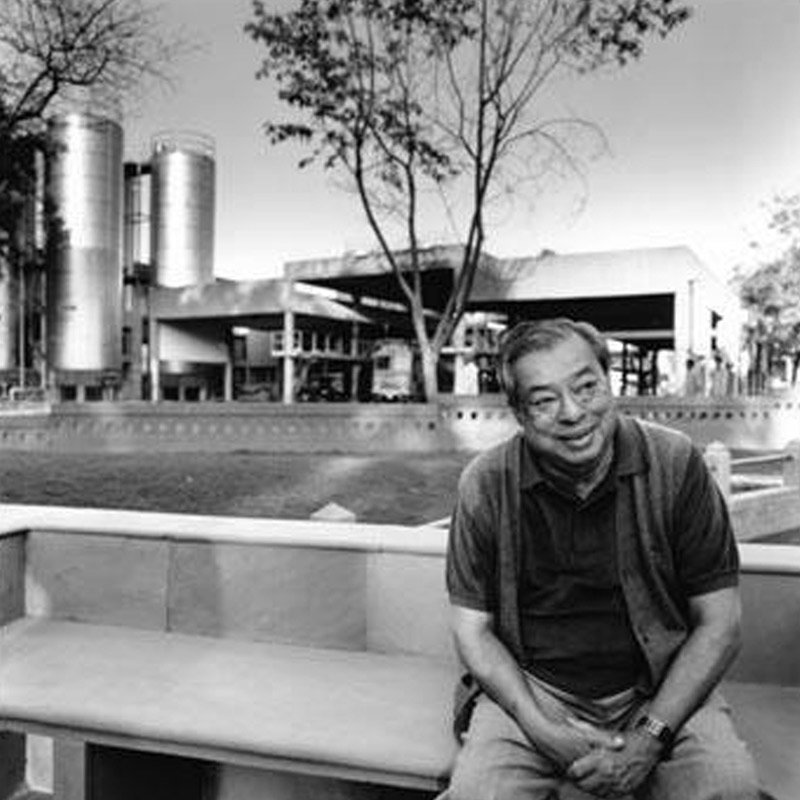
Verghese Kurien was born on 26 November 1921 at Calicut (now Kozhikode in Kerala) into a Syrian Christian family. His father was a civil surgeon working at Cochin, Kerala.
He graduated in Physics from Loyola College, Madras in 1940 and then obtained his Bachelors in Mechanical engineering from the College of Engineering, Guindy affiliated to University of Madras. After completing his degree, he joined the Tata Steel Technical Institute, Jamshedpur from where he graduated in 1946. Subsequently, he went to the United States on a Government of India scholarship to earn a Master of Science in Metallurgical Engineering (Distinction) from Michigan State University in 1948.
Work
Verghese Kurien arrived back from the United States to India after his master's degree, and was quickly deputed to the Government of India's experimental creamery, at Anand in Gujarat's Kheda district by the government and rather half-heartedly served out his bond period against the scholarship given by them. He arrived at Anand on Friday 13 May 1949 and started the work assigned to him the very same day. He had already made up his mind to quit mid-way, but was persuaded to stay back at Anand by Tribhuvandas Patel (who would later share the Magsaysay with him) who had brought together Kheda's farmers as a cooperative union to process and sell their milk, a pioneering concept at the time.
He would brook no meddling from the political class or bureaucrats sitting in the capital cities, letting it be known upfront, though he, and his mentor and colleague, Tribhuvandas Patel were backed by the few enlightened political leaders and bureaucrats of the early Independence days who saw merit in their pioneering cooperative model.
Tribhuvandas Patel's sincere and earnest efforts and the trust placed in him by farmers inspired Kurien to dedicate himself to the challenging task before them, so much so, that when Prime Minister Jawaharlal Nehru was to visit Anand later to inaugurate Amul's plant, he embraced Kurien for his groundbreaking work. Meanwhile, Kurien's buddy and dairy expert H. M. Dalaya, invented the process of making skim milk powder and condensed milk from buffalo milk instead of from cow milk. This was the reason Amul would compete successfully and well against Nestle which used only cow milk to make them. In India, buffalo milk is the main raw material unlike Europe where cow milk is abundant. Later research at Amul by Dr. G. H. Wilster, saw cheese from buffalo milk.
The Amul pattern of cooperatives became so successful, that in 1965 Prime Minister Lal Bahadur Shastri, tasked Kurien to replicate the program nationwide, citing his "extraordinary and dynamic leadership", and the National Dairy Development Board (NDDB) was set up. Kurien agreed on condition that he will not move from Anand, and it will have to be headquartered there and not in Delhi, away from bureaucratic and political meddling and closer to farmers. Shastri agreed. Kurien took calculated risks and took on established competitors viz. Aarey dairy of the Bombay Milk Scheme and Polson Dairy, and was bold to the face when dealing with aid donors like UNICEF, and confronted the New Zealand government, and was ambitious against a powerful 'dumping' lobby of countries which wanted to 'convert food aid into trade'
- He experimented with ways to produce milk powder from buffalo milk. This culminated in the establishment of India's first ever milk powder plant.
- The plant, upon Kurien's request, was inaugurated by Pt Jawaharlal Nehru on October 31st, 1955.
- The White Revolution started by him led to the development of Mother Dairy.
- Other important institutions established under his leadership include GCMMF (Gujarat Cooperative Milk Marketing Federation Ltd) and NDDB (National Dairy Development Board).
- Because of his invaluable contribution to the dairy industry, his birthday, the 26th of November, is now celebrated as National Milk Day.
| Year | Name of Award or Honor | Awarding Organization |
|---|---|---|
| 1999 | Padma Vibhushan | Government of India |
| 1993 | International Person of the Year Award | World Dairy Expo |
| 1991 | Distinguished Alumni Award | Michigan State University. |
| 1989 | World Food Prize | World Food Prize, USA. |
| 1986 | Wateler Peace Prize Award | Carnegie Foundation, The Netherlands. |
| 1986 | Krushi Ratna Award | Government of India. |
| 1966 | Padma Bhushan | Government of India. |
| 1965 | Padma Shri | Government of India. |
| 1963 | Ramon Magsaysay Award | Ramon Magsaysay Award Foundation. |
Verghese Kurien married Molly and they had one daughter Nirmala Kurien and a grandson, Siddharth. Verghese Kurien died on 9 September 2012 after a brief spell of illness in Nadiad, near Anand in Gujarat, India. He was 90. His wife Molly died on 14 December 2012 in Mumbai after a brief illness.
http://www.drkurien.com/
No comments:
Post a Comment